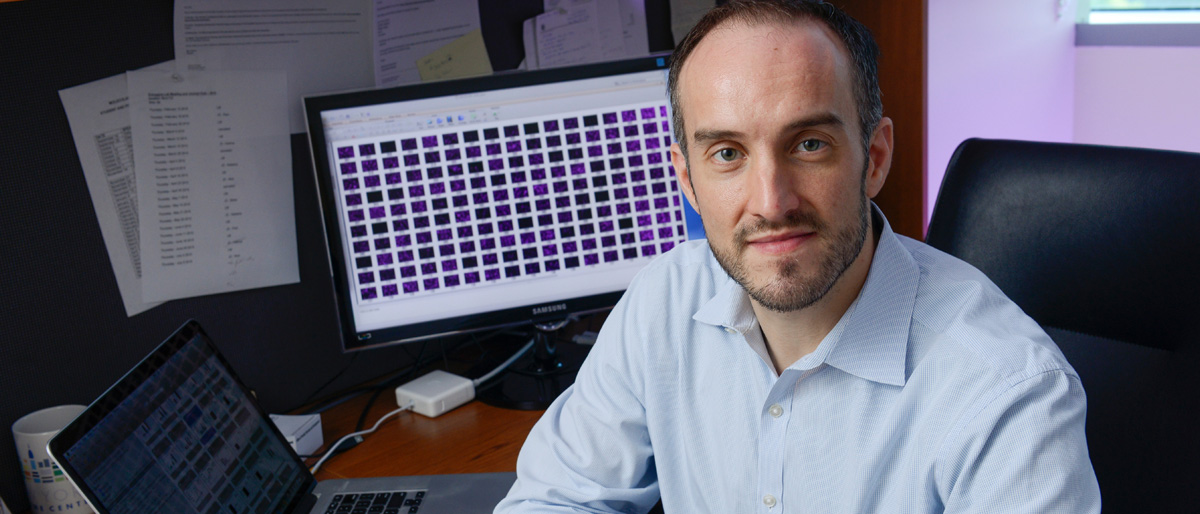Dr. John Schoggins: Investigator in the Pathogenesis of Infectious Disease

Dr. John Schoggins, known for his studies on antiviral immunity, has been named a 2019 Investigator in the Pathogenesis of Infectious Disease. He is among 11 early career scientists selected for the Burroughs Wellcome Fund (BWF) award, which provides research funding of $500,000 over five years.
The Assistant Professor of Microbiology investigates the innate immune response to viral infection by studying a family of nasty pathogens called flaviviruses that can cause life-threatening diseases such as West Nile encephalitis, congenital Zika syndrome, and dengue fever. In one study, his lab used CRISPR technology to screen for proteins involved in the body’s defense. That study revealed a human gene encoding a protein that blocks viral replication. In 2016, his group showed that the Zika virus directly infects brain cells and evades immune system detection.
I am thrilled to be chosen for this honor,
Dr. Schoggins said. Support from the Burroughs Wellcome Fund will allow us to implement innovative approaches to understand how the immune system controls viral infections.
He said the BWF support will enable his team to combine cell culture models with biochemical, genetic, and molecular approaches to develop a more holistic view of how mammals mount an innate immune response to limit viral infection.
Dr. Schoggins is a bold scientific innovator who precisely meets the spirit and substance of the Burroughs Wellcome program in the Pathogenesis of Infectious Disease. I am thrilled that his pioneering work has been aptly recognized by the BWF scientific advisory board,” said Dr. Michael Norgard, Professor and Chair of Microbiology. “Dr. Schoggins’ progressive ideas regarding innate immunity against viruses engender fresh viewpoints on how to discern new antiviral mechanisms by the clever, integrative use of the latest methods in molecular genetics and animal models of infection. He clearly is at the cutting edge of some major new discoveries.
Dr. Norgard holds the B.B. Owen Distinguished Chair in Molecular Research.
Dr. Schoggins is a Nancy Cain and Jeffrey A. Marcus Scholar in Medical Research, in Honor of Dr. Bill S. Vowell.

